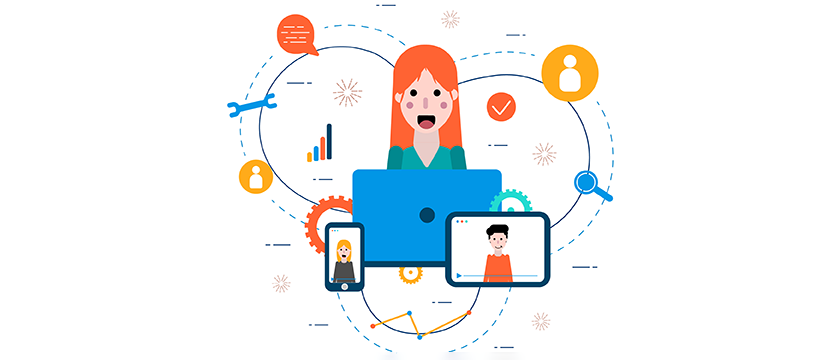Introduction
In today’s digital age, consumers interact with brands across multiple channels, from social media and email to in-store visits and customer service calls. To remain competitive, businesses must provide a seamless and cohesive experience across all these touchpoints. This is where cross-channel customer experience (CX) comes into play. Let’s explore what cross-channel customer experience entails and how it can significantly impact business success.
Understanding Cross-Channel Customer Experience
Cross-channel customer experience refers to the integration and consistency of customer interactions across various platforms and touchpoints. It ensures that whether a customer is shopping online, interacting with a mobile app, engaging on social media, or visiting a physical store, the experience remains unified and harmonious.
This seamless integration is vital for maintaining customer satisfaction and loyalty. When customers perceive a brand as cohesive and responsive, regardless of their chosen channel, their overall experience improves, increasing trust and retention.
Key Components of Cross-Channel Customer Experience
- Consistency: Consistency across channels means maintaining the same brand voice, messaging, and service quality. Customers should avoid conflicting information or drastically different experiences depending on their platform. Consistency builds reliability and trust, making it easier for customers to engage with your brand.
- Personalization: Personalization involves tailoring the customer experience based on individual preferences and behavior. Businesses can create personalized interactions that resonate with customers by leveraging data from various channels. This could include personalized product recommendations, targeted marketing messages, and customized support experiences.
- Integration: Integration ensures that different channels work together seamlessly. For example, if a customer places an order online and contacts customer service, the service representative should have access to the order history and relevant information. Integrated systems prevent fragmentation and provide a smooth customer journey.
- Real-Time Engagement Real-time: engagement is crucial in today’s fast-paced environment. Customers expect quick responses and real-time updates across all channels. Utilizing chatbots, real-time notifications, and prompt customer service can enhance the customer experience significantly.
Benefits of Cross-Channel Customer Experience
- Enhanced Customer Satisfaction: A seamless and consistent experience across all touchpoints increases customer satisfaction. When customers feel understood and valued, they are more likely to develop a positive perception of the brand and remain loyal.
- Increased Customer Loyalty: Loyal customers are the backbone of any successful business. By providing a unified experience, businesses can foster stronger relationships and encourage repeat purchases. Personalized experiences, in particular, make customers feel special and appreciated, enhancing their loyalty.
- Higher Conversion Rates: Consistent and customized experiences can significantly improve conversion rates. Customers are more likely to complete the transaction When they encounter a smooth and engaging journey from awareness to purchase. Additionally, real-time engagement and support can address any concerns promptly, further driving conversions.
- Better Customer Insights: Cross-channel integration allows businesses to gather comprehensive customer behavior and preferences data. Analysing this data provides valuable insights for marketing strategies, product development, and customer service improvements. Understanding the customer journey across channels enables businesses to make data-driven decisions.
- Competitive Advantage: In a competitive market, providing a superior customer experience can set a brand apart from its competitors. A well-executed cross-channel strategy can create a memorable and positive impression, attracting new customers and retaining existing ones.
Strategies for Implementing Cross-Channel Customer Experience
- Develop a Unified Customer Profile: Collect and integrate data from all touchpoints to create a comprehensive customer profile. This profile should include purchase history, preferences, and interaction history, enabling personalized and consistent experiences.
- Utilize Customer Journey Mapping: Map out the customer journey across all channels to identify potential pain points and opportunities for improvement. Understanding the customer’s path can help streamline processes and enhance the overall experience.
- Invest in Technology: Implement integrated CRM systems, marketing automation tools, and data analytics platforms that support cross-channel interactions. These technologies facilitate data sharing and provide a unified view of the customer.
- Train and Empower Employees: Ensure that employees across all departments are trained to deliver a consistent and high-quality customer experience. Empower them with the tools and information they need to provide exceptional service.
- Monitor and Optimize: Continuously monitor customer feedback and performance metrics to identify areas for improvement. Use this data to optimize the customer experience strategy, ensuring it evolves with changing customer expectations and technological advancements.
Conclusion
Cross-channel customer experience is no longer a luxury but necessary for businesses aiming to thrive in today’s competitive landscape. Businesses can enhance customer satisfaction, loyalty, and overall success by ensuring consistency, personalization, and integration across all touchpoints. Embracing a holistic approach to customer experience meets and exceeds customer expectations, paving the way for sustained growth and a robust brand reputation.
To learn more or to acquire our services, please contact us at info@paypercampaign.com





